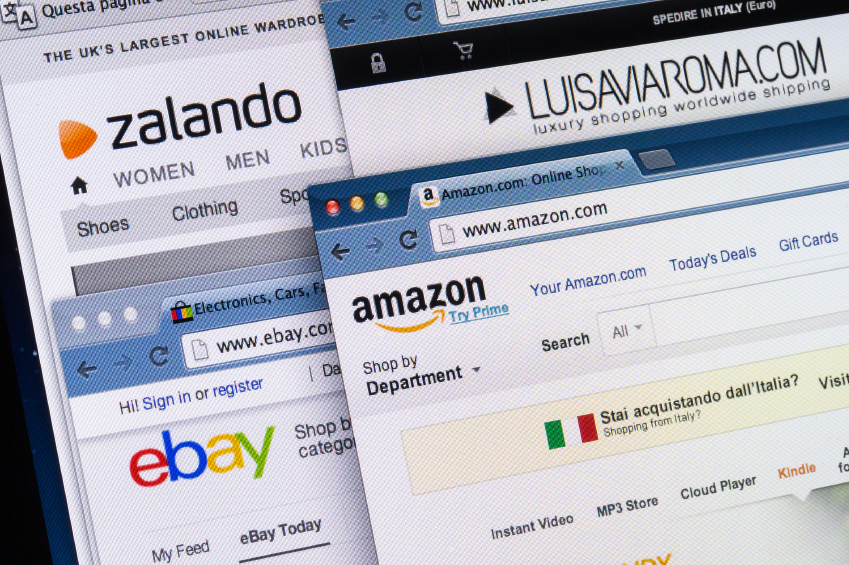Shoes, bags, dresses, trousers, suits, sportswear, jackets, skirts, blouses, T-shirts, sweaters, sunglasses, hats, belts, wallets, ties, watches, jewelry… You are unable to get enough of all this? Then, follow us on a journey back to 2008: What had you thought on hearing of another new online shop?
The story began in Germany when two graduates, Robert Gentz and David Schneider, hit upon a simple idea: Women all over the world love fashion and shoes, and this is never going to change. So why not use this fascination to create a new business concept? Though they had this idea, Robert and David knew they would not be able to handle such a startup by themselves. It was only with the sponsorship of the German business incubator, “Rocket Internet”, and others that Zalando turned into one of the biggest online distributors of fashion and shoes within a few years. But what is the story behind Zalando? What are the factors that made it so successful?
Factor of success #1: Zalando’s business model.
From the beginning, Zalando managed to reach a huge and online target group. They invested more than 600 million Euros in advertising (only on TV and online) to successfully draw attention to the venture! The high marketing investments have already paid off: In Germany, Zalando has a brand awareness of an incredible 95%.
One big factor contributing to the success is the website layout. It is clearly structured and easy to navigate. There are several ways to narrow down the search by choosing options such as color, size, brand, or price. Moreover, Zalando advertisements make three promises: free distribution, 100-day return facility, and a free service-hotline and service chat, both available 24/7.
Factor of success #2: Search Engine Optimization (SEO)
Zalando is everywhere! If you are looking online for clothes or shoes via Google, it is almost impossible not to stumble over Zalando. But how is this made possible? Zalando uses SEO by setting numerous keywords around themes of shoes and fashion. Their combination of terms (e.g. Hugo Boss + blue + trousers) is especially unique and promising, as customers look for specific product combinations. Zalando also uses this approach for their website articles. To sum up, visitors do find a lot of information presented as texts, videos, pictures, games and graphics, and they certainly all influence the SEO.
Factor of success #3: Google AdWords
There are 129,000 Google-keywords—does one need to say more?
Factor of success #4: Retargeting
Do you sometimes feel that Zalando is kind of chasing you? Do you see your favorite product on each and every website? This is not just a feeling, it is real. Zalando is a specialist in retargeting. But first let us explain this online-phenomenon: 95% of the people leave an online shop without buying anything even though they might have some stuff in their shopping basket. Online distributors use retargeting to counter this behavior. As a result, customers find huge and colorful product banners, lasting for weeks, on popular websites. Only one click on the banner’s “buy-now-button” and customers are led directly to their shopping basket on the website. These constant reminders often lead to a transaction at a second glance.
Factor of success #5: E-mail targeting
You’ve got mail! Zalando uses a product innovation of the dialog specialist “United Internet Dialog called “trustedDialog” E-Mail Targeting.” TrustedDialog offers companies a new e-mail quality standard, creating trust among customers. It includes the following features: safe delivery through sender authentication, customer-specific e-mail content such as product proposals, and special recommendations as well as a personal customer approach. Zalando also includes videos or pictures to draw a higher level of attention and create trust among customers. This is finally enhanced by showing the trustedDialog-seal in the customers’ in-box.
As a result of these factors of success, it was only a matter of time that Zalando began their expansion. Currently, Zalando is represented in 15 European countries including France, Spain and Italy. They plan their next expansion mainly in eastern European countries, and would like to expand worldwide in the near future. And here, Zalando confronts a huge issue: Rocket Internet, their business incubator, owns a lot of similar e-commerce shops across the world. They are all, in a way, clones based on the same concept: fashion distributors or having a fashion section, at least. So, the problem for Zalando is: Why should Rocket Internet create a new competitor within its own company?
Besides, all the factors of success, there is a point that demands mention. Zalando has already earned huge success, something that its high revenues clearly show. But Zalando faces a tough challenge at this juncture: They are now nearly six years in the market but are yet to earn profits! So, the big question looms: How long can Zalando continue with their present strategy without making profits?

